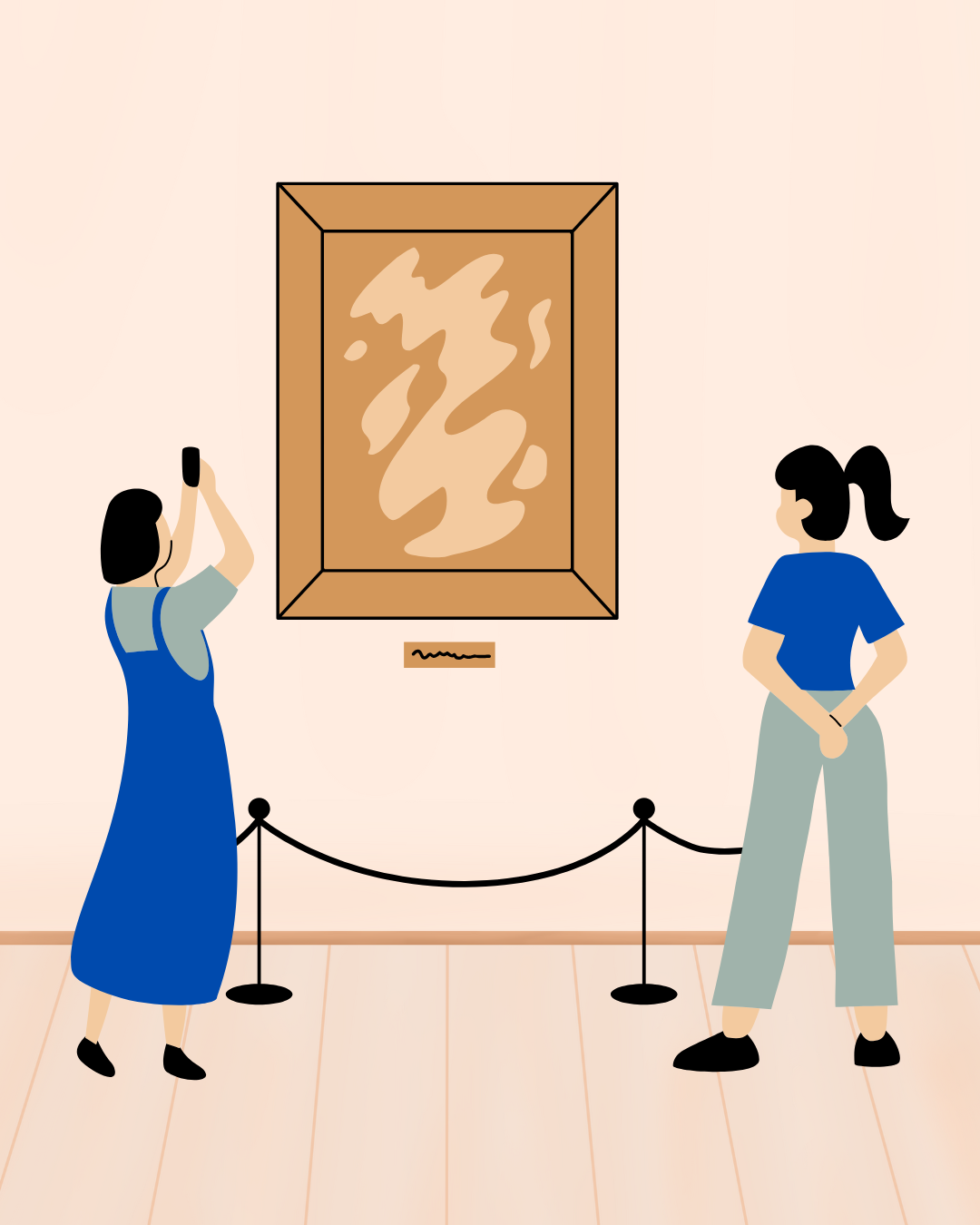Create More and Explain Less: An Argument Against Artist Statement Requirements
March 30, 2025
Alex Deiters | Writing Center Tutor
The first time I was asked to create an artist statement was at a Harry Potter summer camp. My fellow grade-school witches and wizards and I used various condiments and beverages provided by our “professors” (my neighbors Elijah and Julia) to create our concoctions. With Julia assisting as a scribe, I explained that my potion—primarily made of ketchup and yellow Gatorade—would teleport the drinker back to where they were the day before if consumed correctly.
An artist statement is any piece of writing by the artist that helps the audience access or understand their work. Often, these are helpful tools used by artists that provide essential context. For example, knowing that my former basketball coach, Cbabi Bayoc, created his 365 Days with Dad series with the primary goal of promoting more positive images of Black fatherhood provides crucial insight into the paintings. Understanding that much of Cbabi’s style developed when he worked as a caricature artist at Six Flags enriches the experience for me.
However, artist statements often feel clumsy and redundant. That’s because they are often required from people who already communicate everything they need to through their art. Can we really ask for more than creation?
It’s reasonable to ask historians for their sources. It’s reasonable to ask scientists and philosophers how they arrived at their conclusions. The entire intellectual mission of universities depends on people explaining themselves and their work.
I believe this is not the case with most art.
Ask a painter about their craft and their technique, but don’t require them to say what they have already painted. Sometimes they know these words, sometimes they don't. The artist who uses words in addition to a canvas isn’t better than the one who doesn't— and won’t necessarily sell more after university.
A painting cannot be reduced to what the painter is attempting to communicate because art is a partnership between the viewer and the artist. Often, the viewer will be better at meaning-making than the original creator. Occasionally, an artist may feel the need to elaborate. Others embrace the fact that meaning emerges in collaboration between the viewer and the artist.
If a poem could be boiled down to “what it means” and a reader would get the same out of a synopsis, then it wasn’t a very good poem. If a novel could be reduced to a philosophical treatise, then the author should have just written that instead of telling a story.
A reasonable objection to my whining would be that a statement of intent doesn’t force a specific interpretation but simply adds context to illuminate an artist’s inspiration. I largely agree. The problem arises when academia requires this over-explanation of artists.
To be clear, discussions of form, style, and inspiration have their place. I’d be lying if I said that writing artist statements hasn't helped me refine what I want my work to be. But perhaps that’s just because I like writing. The same cannot be said for many artists who are already occupied with becoming better painters, sculptors, and printmakers to focus on another discipline entirely. I only caution against the assumption that art unexplained is incomplete art.
Creative arts are not like science, or history, or literary analysis, where the point is to explain and illuminate. The point of creative arts is to create. Any other reason for creating is for the artist to decide. Explaining can be valuable, but it’s not a requirement of creation. Implicit in this explanation requirement is the idea that creating alone isn’t enough. No one asks a medical grad student to illustrate their dissertation, and they shouldn’t. Why, then, should an illustrator be required to write about their watercolors? They went to school to learn how to paint. Being a good painter, networker, and being lucky will determine their success.
The irritating cousin of the artist statement is the art gallery label (the little white plaques next to artwork in museums). They serve the same purpose as artist statements- except they are rarely written by the artist.
I admit that sometimes a little plaque with a date and an expert summary of the symbolism present in a Byzantine Madonna and Child mosaic helps to put me into a perspective I would only be privy to if I were a priest in the 1000s. More often, though, I find that rather than deepening my appreciation for a work, these plaques simply distract. I catch myself staring at the plaque describing the art piece longer than the piece itself, out of a compulsive need to understand it. Maybe that’s just a personal problem, but I know I am not alone. The problem isn’t the plaque itself, but that it is always there. Their constant inclusion insinuates that art worth paying attention to must come with an explanation— or worse, that it must include a written justification for not explaining, as is so often the case in modernist art.
Sure, I could just not read the plaque. But I don't have that kind of impulse control.
Sometimes it’s interesting to know that Rothko alternated between saying he was painting God and saying he was painting blurry rectangles, but what if I just want to look at a blurry rectangle instead of feeling obligated to read a scholar debate with themselves for three paragraphs?
By forcing academic requirements onto non-academic work, we turn a potentially helpful tool for understanding, into a chore that to often wastes both the viewer’s and the artist's time. That is why I believe artist statement requirements more often lead to word vomit than clarity. Sometimes, all that needs to be said has already been painted.
